Build your tool to compare the performance of different markets during budget planning

In the second article on volatility [1], we discussed how to compare different international transactions on an equivalent basis to account for the impact differential on profitability generated by currencies.
Monitor the performance of your foreign exchange risk management strategy

Expanding business abroad is a source of growth, but it also entails risks for SMEs. It is also complex to monitor the successive impacts of exchange rates on the company’s anticipated performance
Analysis of the performance of a business line in a multi-currency context
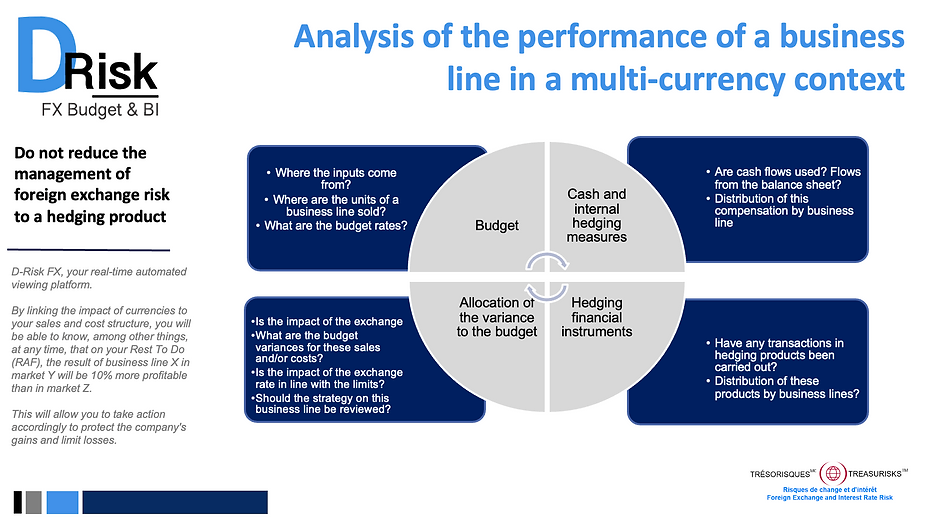
Developing business abroad is a source of growth but involves risks for SMEs.
New markets, new currencies: a performance monitoring more complicated?
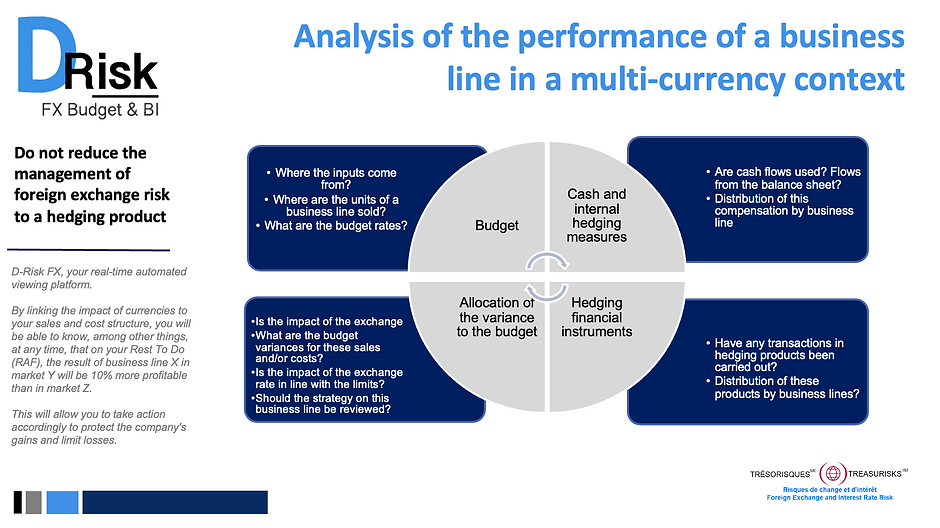
Expanding business abroad is a source of growth, but it also entails risks for SMEs.
Foreign exchange risk management: a lever to achieve your international goals?
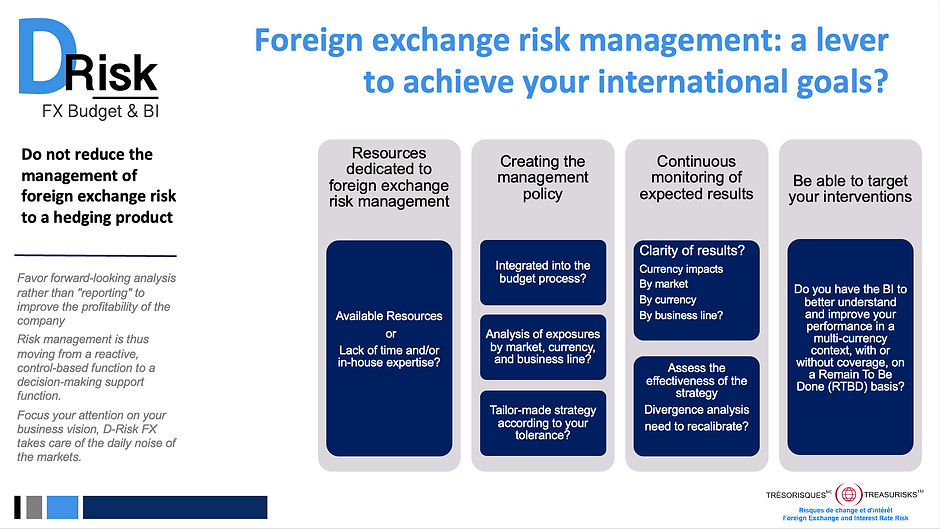
Expanding business abroad is a source of growth, but it also entails risks for SMEs.
What is meant by the extent of the risk?
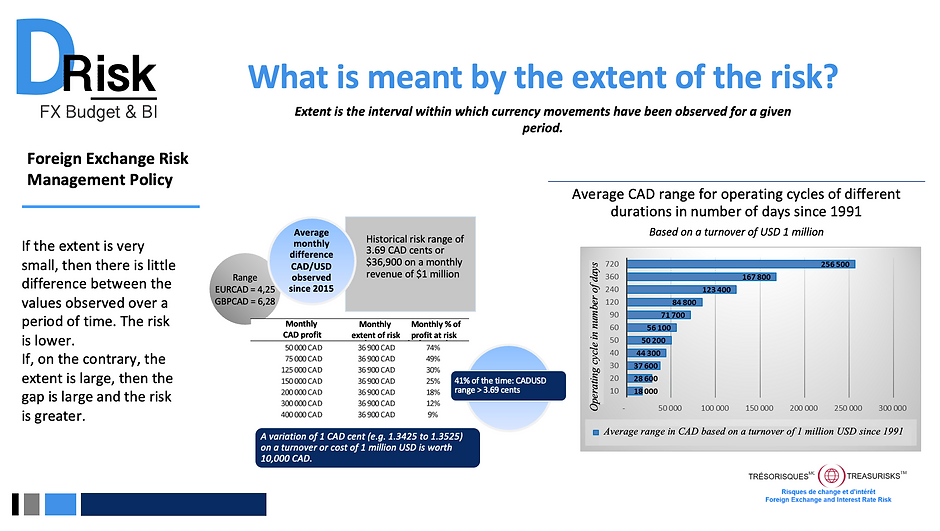
Expanding business abroad is a source of growth, but it also entails risks for SMEs. It is also complex to monitor the successive impacts of exchange rates on the company’s anticipated performance.
Two markets, one measure? How to assess the hidden currency risk in the budget?

In a previous article, we discussed the use of volatility as a measure of uncertainty, the factors that influence it, and its impacts on SMEs.
Resilience in times of crisis : Asking yourself the right questions

The Covid-19 pandemic and the accompanying sanitary measures have shaken our daily lives and the way we do business in an unprecedented way.
What does the Foreign Exchange Risk Management Policy propose ?
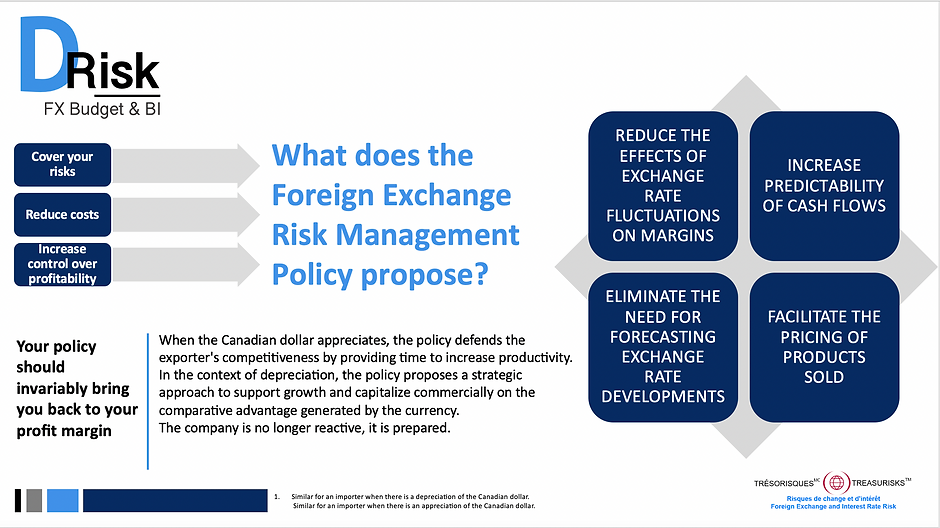
Expanding business abroad is a source of growth, but it also entails risks for SMEs. It is also complex to monitor the successive impacts of exchange rates on the company’s anticipated performance.


